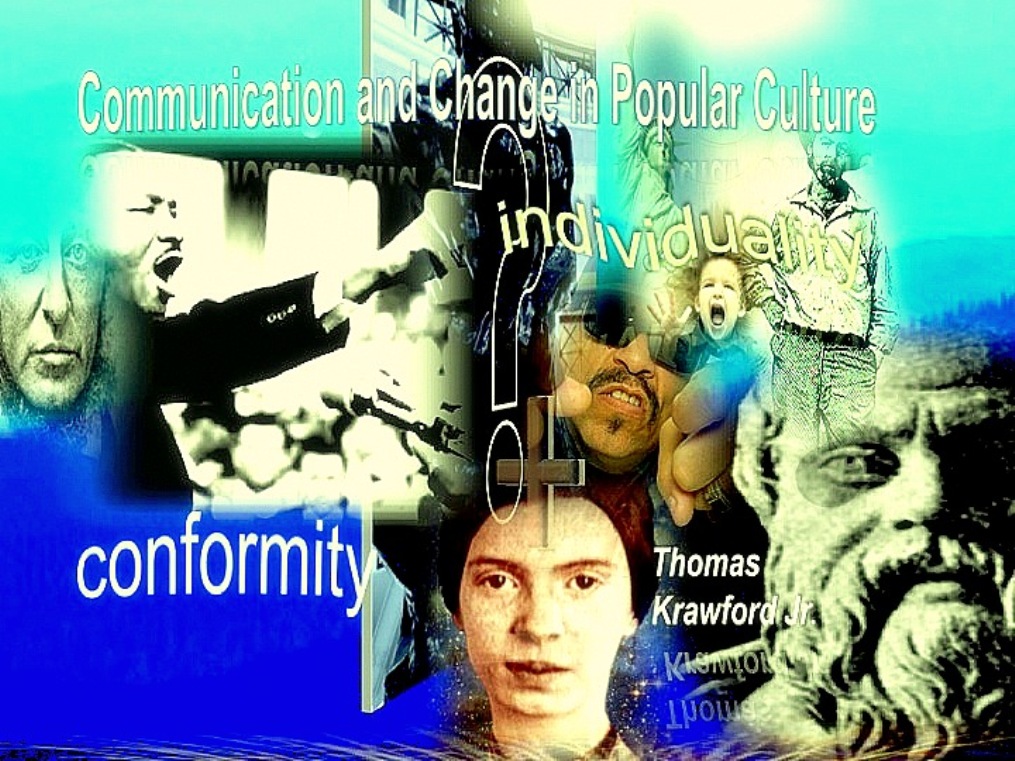IV.
Before we move on from our last discussion, I am going to present a lesson plan for 7th Grade Introduction to Speech Communication based on the system of Counter Interactional Reasoning discussed up to this point in our overall presentation. It will help to clarify things up to this point.
Tom Krawford ( form Used With Permission From LessonPlansPage.com)
Lesson Plan Title: Introduction to Speech Communication
Concept / Topic To Present Speech Communication from the Perspective of Mixing Red, Blue and Green Light.
Standards Addressed: (check) 1:1 (cumulatively utilizing prior knowledge of Language Skills of reading comprehension, analysis and fundamental grammar 2:2 (immediately interrelational to other required and curricular disciplines) 3:3 (contextually relevant to conditions of community diversity and personal foundation)
Specific Objectives(s): Students will be able to demonstrate an understanding of speech communication from the perspective of mixing the primary colors of red, blue and green light.
Students will be able to add their perspective of what speech is to the perspectives of their peers.
Students will then be able to Subtract from exchange with their peers, their own recordable understanding of Speech Communication which they will use in future classroom assignments.
General Goals: Students will see , understand and use a perspective of Speech Communication which is systematic, easily accessible and readily transferable to other disciplines.
Required Materials: Each student will need a journal they can write in and speak from.
• A projector lamp capable of splitting and combinning light into red, blue and green.
• 2 large clear and empty glasses, two glasses half the size and three smaller glasses.
• Water and a large basin.
• red, yellow, green and blue food dye
Anticipatory Set (Lead-In):
• There are basically two kinds of speech communication we all perform everyday: speech for things we want and want to do and speech for things we need or want to know and remember.
• When we want something we are partially like this clear and empty glass and partially like the water we put in the glass: a combination of what we know and what we don't. So, we always start from a clear, transparent perspective based on something we don't have. We perform Speech in this case to get a particular thing because black represents those possible things we don't already have.
• But when we want to know something, we are like the center of the Venn Diagram which splits light into three primary colors leaving the center representing all possible colors. We perform Speech in this case to narrow all the ideas we have about something (the white in the center) down to an opinion or perspective (the various colors based on the center).
• Speech to get things is subtractive (taking away from not having) while speech to know things is additive (adding to whatever it is we already know); to get is to subtract, while to know is to add.
Step-By-Step Procedures:
1. Start with the projector portion. (Use the kind of filter necessary for splitting light up.
2. Compare empty and full glass with white light and black as the two opposite aspects of possible speech as a performance.
3. Leaving the projector on, combine the clear water with the three different dyes that are the same color as the three different kinds of light. Compare the similarities and the differences between the combinations of light and liquid.
Plan For Independent Practice:
• In groups of four or five, ask each student to write down in their journals either what they want or what they want to know.
• Then, in each group, ask students to interview one another. Ask each student to discover the name of at least two other group members and if they want to have something or want to know something.
• Then ask member of the group to briefly introduce to the class, the group member (s) they interviewed.
Closure (Reflect Anticipatory Set):
1. In their journals, each student writes down who they see themselves as being and how they see their group.
2. Each member then looks for and begins to assemble images of how they see themselves and how they see their group.
3. Based what everyone has shared up to this point, each group member will have a set of images that depict who they are in terms of their wanting to know something or wanting to have something.
Assessment Based On Objectives:
• Students will mainly be evaluated for participation credit both individually and as a group.
• Is it clear by their choices of representative images whether they want something or want to know something?
• Is each student ready to add their images to the larger group collage in the next assignment?
• In addition, each student will write in their journal how each understands Speech that subtracts (subtracts from not having) or adds (adds to what is already known)
Adaptations (For Students With Learning Disabilities):
1. For students who are visually impaired, we will need a pad of post it sticky pads in addition and a pointed, blunt instrument for making indentations.
2. Follow the procedure above. Use the blunt instrument to mark a sticky note with the appropriate Braille representation for the specific color or combination we wish to draw attention to and place those stickys first on the projection screen, and then on each corresponding glass of mixed and non mixed liquid.
3. For Hearing Impaired or ASD students, increase proximity an adapt the original model as context dictates.
The design of this lesson plan may appear to be complicated, but in application it is not. Once you get the physical examples of Speech Performance up in front of the class, the two different systems of color combination: one based on light combination, the other based on the combination of food coloring, will do most of the work.
In addition, the overall model can be easily adapted for either a Speech Communications context or a context of Interpretation and the Performance of Literature.
In addition, associating light and liquid physical systems of color and change with two opposing reasons for Speech Performance, will give each student, the opportunity to hone a natural but intermittent system of logical inquiry into a readily adaptable and continuous process of analysis they may already sometimes use to a lesser or greater extent.
In other words, I am not promoting teaching "how" to think. I am, however promoting my belief that 1)human thought and behavior is both a discrete and continuous binary system and 2) Language in general and Speech Communication in particular represents one example of the hierarchical yet counter-interactional nature of human thought and behavior as a general and specific system of inherent condition and subsequent, logical implication.
Next time, we will discuss some of the theoretical implications for current established reasoning regarding Symbolic Interaction, Affect Control and Interrelation Theories.
Eventually, I am going adapt our discussion to an analysis of Language as a
contextual, joint, direct and inverse Cognitive Map of interrelated systems of path and position. At this point we will be getting into the work of O'Keefe, and Tolman as well as Blumer and Postrado.
I admit our overall goal is ambitious to say the least, but it is achievable.
Thank you.
The influence of Malthus in India?
-
Public servants frequently fail to implement government policy as intended
by principals. I investigate how exposure to economic ideas can alter
implemen...
4 hours ago


+of+IMG_9264.jpg)




No comments:
Post a Comment